When a guided missile, almost 50m wide and 50m long, weighing well over 100 tonnes, travelling at several hundred kilometers an hour, slams into the upper floors of one of the world's tallest buildings, it seems inevitable that the building will be destroyed.
But it was not inevitable. It was the huge amount of fuel the Boeing 767-200s were carrying when they hit, not the impact itself, which caused the World Trade Center towers to fall.
Fire to blame
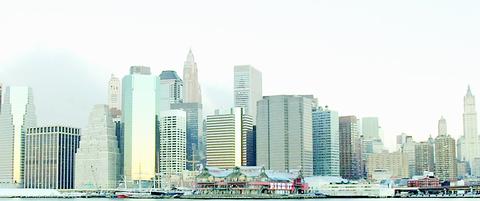
PHOTO: AP
"The cause was fire," said Gordon Masterton, chairman of the structural and buildings board of the UK's Institute of Civil Engineers. "The images were almost surreal: the plane seemed to be absorbed by the building, without the building actually moving. The building survived the initial impact remarkably well.
"I reckon the force of the impact was something like 8,000 to 10,000 tonnes, like 20 of the biggest trucks colliding with the tower simultaneously. That was probably more than double its design capacity under hurricane winds. Yet the building absorbed it."
The World Trade Center towers, built in 1972 and 1973 and designed by Minoru Yamasaki, had an open-plan design.
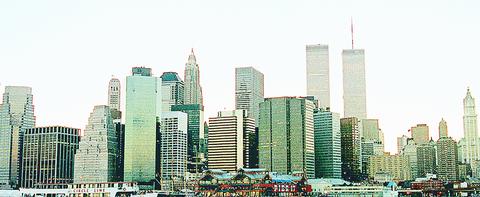
PHOTO: AP
Twelve of its 110 stories -- four three-floor areas at the bottom, top and middle -- were set aside for technical services such as water, sewage, air conditioning and power.
The remaining floors were, for the most part, typical office areas. No one saw the hidden steel and concrete skeleton of the building underneath the floor tiles or thought about the strength of the steel struts framing the windows, which kept them up in the air above Manhattan.
The big problem for skyscraper designers is wind. Not the risk of a big gust simply knocking the tower over, but of wind causing the tower to vibrate like a tuning fork at the kind of frequency which would cause it to crack and fail.
Often architects and engineers brace the building against wind by using diagonal steel struts, from corner to corner of each square in the skyscraper's steel frame. Another method is to honeycomb the building with internal walls.
Vertical columns
Yamasaki used another method, which essentially made the building a hollow steel tube. He built the towers using something called Vierendeel trusses -- 240 vertical steel columns around the outside of the building to support its weight, and powerful steel trusses binding the columns together, like belts, to prevent them from peeling apart like a banana skin.
By itself, that would not stop the dangers of sway, but in addition Yamasaki and his engineering colleagues installed 10,000 dampers, a kind of shock absorber, which took the energy of the wind and turned it into heat.
With such a strong, rigid tube, the floors themselves did not, it was felt, need to be strong. They consisted simply of light steel beams, with a thin covering of steel, covered in turn by 10cm of concrete.
Steel core
That was what was under the feet of three decades of World Trade Center workers. Above the workers' heads, concealed by ceiling panels, was a space of perhaps 50cm containing pipework, ducts and cables. Running down the center of each tower, but not the key element holding it up, was the steel core, containing lift shafts and stairs.
When the planes hit and exploded, they immediately began to burn. The fuel was the instigator, but aluminum from the aircraft wreckage would have begun to burn at temperatures over 600C, as happened in the British warship HMS Sheffield in the Falklands war.
Masterton estimated that the heat of the fire would have risen to between 800C and 1,000C.
That would not have been enough to melt those mighty steel columns and bands -- steel melts at 1,500C -- but it would have been more than enough to soften the columns, like plastic coffee stirrers held close to a match.
"The aeroplane would easily puncture the columns -- you would expect that," Mike Otlet, head of structural engineering at WS Atkins, said in an interview with New Civil Engineer magazine.
"But because of the rigid columns and Vierendeel beam arrangement it would cope well with that.
"But it is an extremely light building. Because of the slender sections in the core, the massive fire load would weaken the columns to their yield point and they would buckle. This would have brought down a floor on to the floor below, overloading more columns in a sequential failure. The building came down vertically, so it is a column failure."
Masterton said: "Suddenly, a single floor would have to take the weight of all the floors above the hottest part of the fire.
Overwhelming force
There was absolutely no chance of that floor supporting the moving weight. The energy released from that would be very substantial: it would take that floor out, then the next one, then the next one."
The columns had spray-on fire protection material, but that was never designed to cope with the results of the ignition of 30 tonnes of aviation fuel.
"That sort of fire, as far as building designers are concerned, is way beyond reasonable contemplation," said Masterton. "Do we want to have buildings that are nuclear bunkers in the air?"
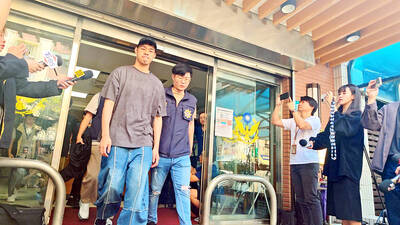
FALSE DOCUMENTS? Actor William Liao said he was ‘voluntarily cooperating’ with police after a suspect was accused of helping to produce false medical certificates Police yesterday questioned at least six entertainers amid allegations of evasion of compulsory military service, with Lee Chuan (李銓), a member of boy band Choc7 (超克7), and actor Daniel Chen (陳大天) among those summoned. The New Taipei City District Prosecutors’ Office in January launched an investigation into a group that was allegedly helping men dodge compulsory military service using falsified medical documents. Actor Darren Wang (王大陸) has been accused of being one of the group’s clients. As the investigation expanded, investigators at New Taipei City’s Yonghe Precinct said that other entertainers commissioned the group to obtain false documents. The main suspect, a man surnamed

DEMOGRAPHICS: Robotics is the most promising answer to looming labor woes, the long-term care system and national contingency response, an official said Taiwan is to launch a five-year plan to boost the robotics industry in a bid to address labor shortages stemming from a declining and aging population, the Executive Yuan said yesterday. The government approved the initiative, dubbed the Smart Robotics Industry Promotion Plan, via executive order, senior officials told a post-Cabinet meeting news conference in Taipei. Taiwan’s population decline would strain the economy and the nation’s ability to care for vulnerable and elderly people, said Peter Hong (洪樂文), who heads the National Science and Technology Council’s (NSTC) Department of Engineering and Technologies. Projections show that the proportion of Taiwanese 65 or older would
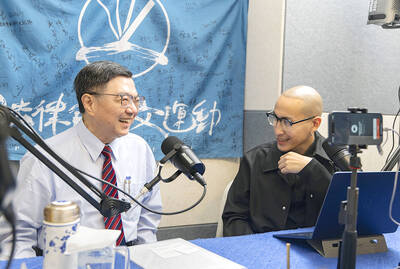
The government is considering polices to increase rental subsidies for people living in social housing who get married and have children, Premier Cho Jung-tai (卓榮泰) said yesterday. During an interview with the Plain Law Movement (法律白話文) podcast, Cho said that housing prices cannot be brought down overnight without affecting banks and mortgages. Therefore, the government is focusing on providing more aid for young people by taking 3 to 5 percent of urban renewal projects and zone expropriations and using that land for social housing, he said. Single people living in social housing who get married and become parents could obtain 50 percent more
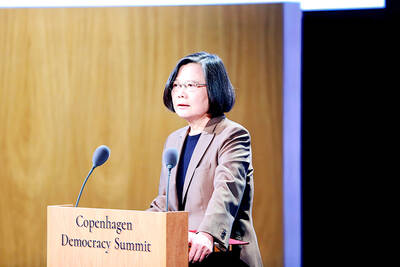
Democracies must remain united in the face of a shifting geopolitical landscape, former president Tsai Ing-wen (蔡英文) told the Copenhagen Democracy Summit on Tuesday, while emphasizing the importance of Taiwan’s security to the world. “Taiwan’s security is essential to regional stability and to defending democratic values amid mounting authoritarianism,” Tsai said at the annual forum in the Danish capital. Noting a “new geopolitical landscape” in which global trade and security face “uncertainty and unpredictability,” Tsai said that democracies must remain united and be more committed to building up resilience together in the face of challenges. Resilience “allows us to absorb shocks, adapt under